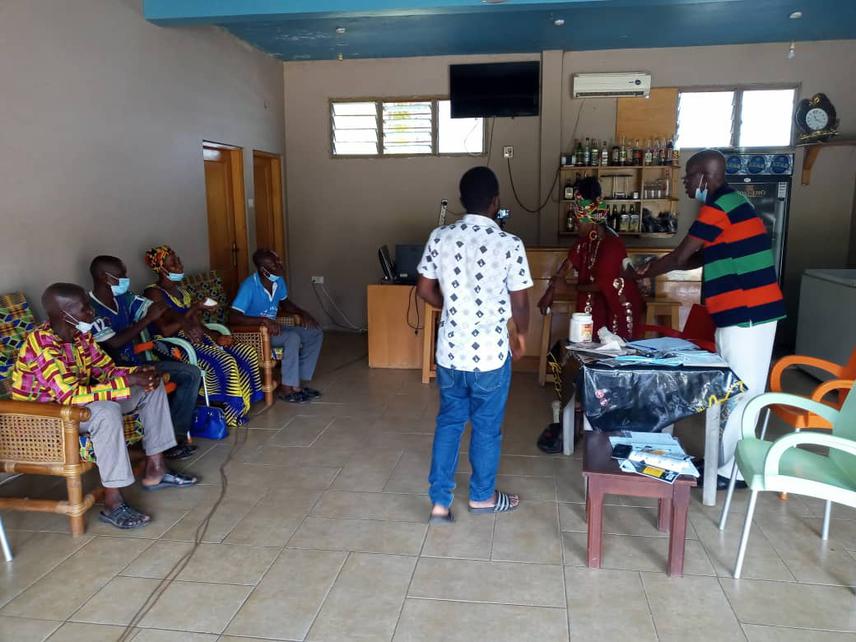Amos Nkpeebo
Other projects
29 Jun 2022
Expanding the Limits of Community-Led Biodiversity Monitoring of Anthropogenic Pressures in 3 Key Biodiversity Areas in Ghana
While Lake Bosomtwi is a Man and Biosphere Reserve, ground evidence show that its core zones remain under serious threat from socio-economic activities and climate change. This project seeks to pilot test a community-based independent reporting platform connecting 21 buffer communities to an online portal using a Mobile App-Link. The online platform will serve as a community-based tool to effectively monitor, share, report and co-develop localized resilience actions. It will serve as an inclusive and safe space for local communities to voice out their grievances with management authorities and contribute to Integrated Biodiversity Management (IBM). This project will publish 3 policy papers including: a) Local capacity gap analysis for community-based independent reporting on the Lake Bosomtwi Man and Biosphere Reserve, b) Local capacity gap analysis for mainstreaming IBM outcomes and lessons into national policies, and c) Socio-institutional gap analysis for the implementation of the buffer zone policy in Ghana.

This project is premised on recent field visits to lake Bosomtwi during which it was noticed that while Lake Bosomtwi has been declared a Man and Biosphere (MAB) Reserve, the riparian landscape is still subjected to illegal mining, expansion in unsustainable farming and fishing practices, indiscriminate dumping of refuse along its banks and climate change.
Recent field engagements observed that in spite of the recent attention on the conservation of the MAB Reserve, the majority of communities (over 60%) noted that their socioeconomic activities along the riparian landscape remain highly inconsistent with biodiversity conservation objectives of the Reserve.
Helping local communities around the MAB Reserve build resilience against and adapt to growing climate risks requires integrated biodiversity management (IBM). In this regard, a wealth of scientific information, data, and tools exists that could help manage these risks and integrate climate change, local climate variability and biodiversity into a broad range of landscape planning, management, engagement and decision-making activities. However, communities are often unsure of how to begin, what this information means for them, and where to turn for trustworthy advice. As a result, the true benefits of ecological connectivity and integrated biodiversity management remains a vague concept to local stakeholders, particularly among communities engaging directly with the landscapes.
Therefore, this project seeks to pilot test a community-based independent reporting platform connecting 21 buffer communities to an online portal using a Mobile App-Link. The online platform will serve as a community-based tool to effectively monitor, share, report and co-develop localized resilience actions. It will serve as an inclusive and safe space for local communities to voice out their grievances with management authorities and contribute to Integrated Biodiversity Management (IBM). In this project, community members will be trained as data collectors and local monitors. Community members will use mobile technology (TIMBY) to collect and share information on illegal logging, fishing with harmful chemicals, indiscriminate dumping of refuse, illegal mining, farming activities, charcoal production, etc.
The use of mobile technology by local communities will facilitate timely reporting, timely verification, and a coordinated response. Therefore, the project will liaise directly with the designated Management Authorities of Lake Bosomtwe including the Water Resources Commission, Lake Bosomtwe Community Resource Management Area (CREMA), Bosomtwe District Assembly to utilize this data to inform and reinforce local management of the Lake Bosomtwe MAB/ landscape.